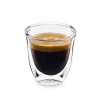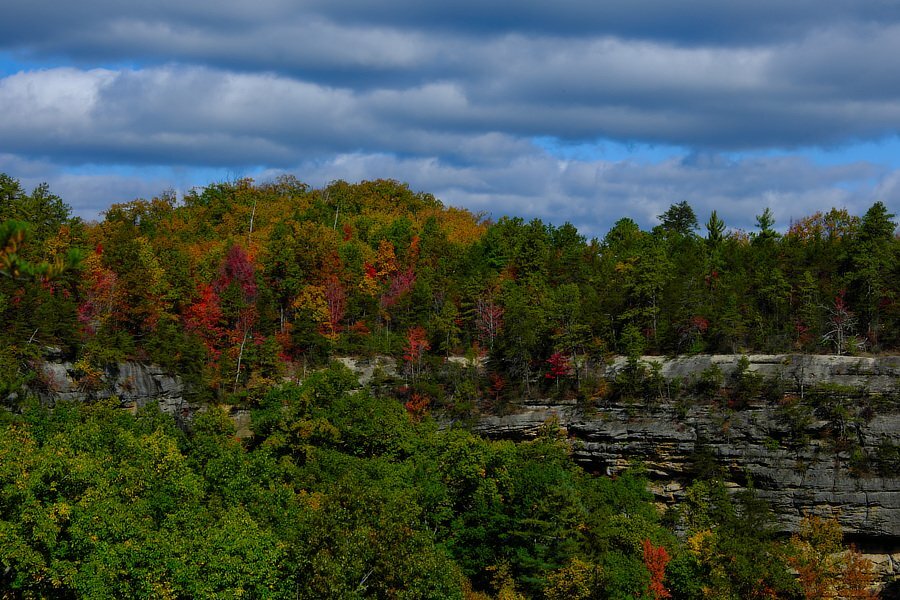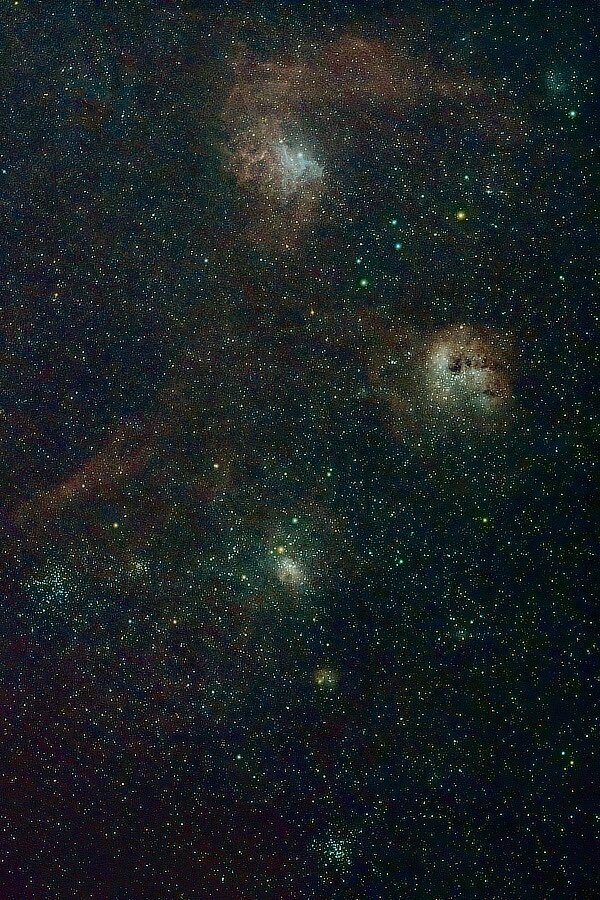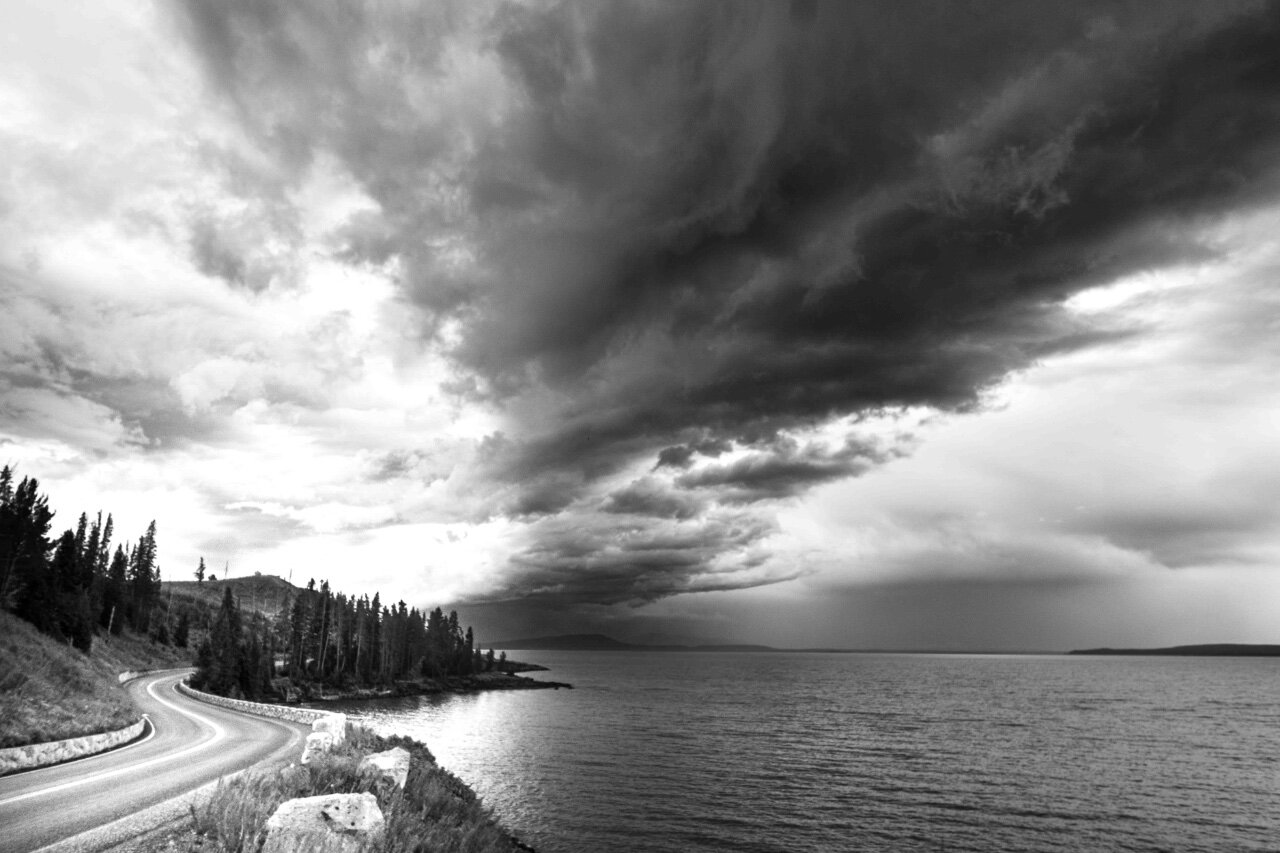Search the Community
Showing results for '원주출장소이스《카톡: po03》〖goos20.c0m〗출장색시미녀언니출장최고시Y┌▌2019-01-22-14-58원주✪AIJ⇂콜걸만남콜걸샵출장소이스❁출장코스가격╡출장여대생♡원주'.
-
In raw 20 fps make 16 picture and After a second block.... Like bufer are full 30 fps RAW make 22 picture After block. SD card are Trascend v90 3 made in Japan with rescue Lost file like Sony. Where can be the limits? With MS 8 fps make maximum 20 pictures After block If someone can esperiment and look if we are in the same boat thankyou
-
+1 to this. Something else to consider regarding write volumes - although i think it'd be minor: Shooting RAW + JPG and backing up across cards you're writing ~100mb to each card (~200mb total) for each exposure. Each raw is about 80mg and each "Fine" is around 20mb. You could try the RAW to Slot1 and JPG to Slot2 and see if you notice a difference at all. That would reduce your write volume to a max of ~80mb to slot one, and 20mb to slot 2, per exposure - a 20% reduction to the largest although I doubt it would make a noticeable difference. FWIW i do this with mine. I have 2 identical V60 cards in each slot. The buffer fills after 22 frames and then starts writing out. It doesn't take more than about 2-3 second to empty the buffer to the SD cards. I don't shoot that many frames but i was trying to figure out what the limits were and it happened at 22 frames the 2 times i tried it. The write out was much slower on an older SD card (1066x)
-
December 22, Winter Solstice Day. Winter is getting ready to make the days longer, the nights shorter and presumably both colder. Autumn was seen at a postal office trying to take care of a forwarding address issue.
-
I only have Capture One Express but I'm guessing the principle is the same with Capture One 22 - under Style you can choose different Film Simulations (including colour simulations). FireStone defaults to showing you the embedded image preview rather than converting raw - you can press the "A" key to make it convert and show you the original colours (this won't work if you have used compressed raw as it isn't supported).
-
Sensor bit readout and rolling shutter
Abevideo posted a topic in Fuji X-H1 / Fuji X-H2s / Fuji X-H2
Fujifilm says "..the X-H2S produces its 6.2K and 4K up to 30p from 14-bit readout, rather than 12-bit mode on previous cameras, meaning the camera can detail up to an extra 2 stops of dynamic range in video mode." and. "Despite the higher bit-depth of the 30p (and slower) modes, Fujifilm says the X-H2S offers rolling shutter rates of around 10.6ms in F-Log 2 mode, quicker than the 16.6ms rate of the X-T4. The higher frame-rate modes, or use of the original F-Log profile, see the camera use a 12-bit readout mode, delivering rolling shutter of 5.6ms." I don't quite understand... 1. does this mean all Flog '1' only uses 12 bit sensor readout, even at lower shutter speeds? 2. presumably having higher frame rates than 30p mean you only have 12bit sensor readout...so does it then improve the sensor readout speed and rolling shutter? and then subsequently, 3. If flog2 is used above 30p, and it does convert to 12-bit sensor readout, does it lose the '14 stops' of dynamic range? If anyone knows it would be really helpful -
Not even manual focus on the FX 14 mm f/2.8 R, with the clutch? You engage manual focus by sliding the focus ring rearward, which reveals a distance scale that you can read against classic DOF markings for different apertures. I have this lens, and just tried turning the focus ring with the lens not mounted on the camera. Looking into the rear of the lens, I see something shifting in re the aperture stop as seen through the glass. Not sure but I think this lens design might be a dozen years old. Sliding the focus ring forward disables it and makes the lens autofocus. I'm not disagreeing, I'm just curious. I have wondered what's going on in there.
-
"Will you walk into my parlour?" said the Spider to the Fly” * Back on page one of this thread, there is a post showing a quick exposure isolating IC 405, The Flaming Star Nebula. That section of the sky has so many things to see it is almost a tourist-oriented nature-viewing area. Some of the highlights include tadpoles, starfish, spiders, flies, pinwheels and more. This is the equivalent of just about 56 minutes of exposure. * The Spider And The Fly by Mary Botham Howitt Messier Object M36 (The Pinwheel Cluster): https://www.messier-objects.com/messier-36-pinwheel-cluster/ Messier Object M38 (The Starfish Cluster): https://www.go-astronomy.com/messier.php?Messier=M38 IC 417 (The Spider Nebula): https://www.nasa.gov/image-article/spider-nebula/ NGC 1931 (The Fly Nebula): https://waid-observatory.com/ic417-2020-01-19-HOO.html IC 410 (The Tadpoles Nebula): https://skyandtelescope.org/online-gallery/ic410-the-tadpoles-nebula-a-star-nursery/ And, of course, IC 405 (The Flaming Star Nebula): https://theskylive.com/sky/deepsky/ic405-flaming-star-nebula-object Will the spider once again coax the fly into its parlour? Will the fly escape the machinations? Their exchange is in the sky for us to ponder...
-
If the objective is to reduce the file size how about 14 bit lossless compressed?
-
Hi folks. I shot a sequence yesterday using a Fuji film Acros R sim on my XT4 while having a RAF/RAW shot at the same time. Fast Raw Viewer (RV 2.0.7) sees the images as BnW in thumbnail preview yet double clicking shows it as full colour. When I open the pic in Capture One 22 I'm only getting the BnW. Same issue when I view in PIE - Picture Information Extractor - thumbnail in BnW yet double click and we are now in colour, but never in Cap.One or Firestone Image Viewer. Im completely confused - any ideas? I'd appreciate it. Thanks.
-
Edited, sorry I did not pay correct attention to your posts wording. That being said: 21- 24 mm with a bit of correction can be nice indoors, so on crop that's 14 or 16? The XF 14 2.8 is a very underrated lens and has that 'look' of the older Fuji 35 folks love so much.
-
Hello everybody, Again, I did not find a dedicated topic to just this lens in the forum. So, as the last (blog) act of the year, here's my opinion on this lens. https://peterpoete.de/xf23-14-wr-review/ Happy New Year 2023! Cheers, Peter P.S. In January I'll be reviewing the XF33 and the XF30 Macro...
-
Hi, I attempted to set up my Fujifilm as a webcam on Zoom/Teams today, but it's not being detected. Software macOS Sonoma 14.1.2 on macBook Pro 2019 Fujifilm X Webcam 2.1.0.0 Fujifilm XF 18-55mm lens X-T3 Settings Drive Dial set to "Single frame", Shutter Speed Dial set to 60, Sensitivity Dial ISO set to A (Auto) Set up > Connection Settings > Connection Mode > USB Tether Shooting Auto AF MF > Face/Eye Detection Setting > Face Detection ON > Eye AUTO AF MF > AF+MF ON Movie Setting > Movie Mode > 4K 16:9 > 29.97P > 100Mbps Steps Turn off X-T3 Connect USB-C to USB-C cable (tried multiple USB-C cables, including the two different macBook charger cables) from USB-C port on X-T3 directly into macBook Pro ports (tried all ports) Open Fujifilm X Webcam 2 Application on macBook Open Zoom/Teams on macBook and start a meeting Turn on X-T3 Zoom: Settings > Video > Camera. Only shows built in camera, no other camera/webcam options What am I doing wrong or missing here?
-
I like circular fisheyes and would love to see Fuji offer one for X mount. But until they do, the 3 available ones I know of are made by 7 Artisans, Laowa (Venus), and Meike (or Voking). I have all three (including one labeled Meike which Amazon says is no longer available, but what looks like the same lens is now available with the Voking brand). It's debatable whether I'm more of a photographer or a collector, but I do love lenses. I recently tried to compare the 3 fisheyes carefully. I think the whole point of a circular fisheye is to capture as much angle as possible, so I measured how big an angle each lens captures. I set up a blinking light at a great distance, and mounted each fisheye on my camera on a stable surveying tripod with a graduated azimuth head. The light and the lens were at the same height and the camera was leveled. I measured how big an angle I could swing each lens by, such that the blinking light was barely visible in the viewfinder. All the lenses covered more angle than they claimed, but they exceeded their claims by different margins. The claimed angles and the observed angles are ranked the same way. 7 Artisans wins this contest, but only by 4.5 degrees, while Meike trails behind by 18.5 degrees which is a way bigger difference. Here's a table of the focal lengths, aperture ranges, claimed and observed coverage angles, and the number of elements and groups in the construction. Fisheye f Aper Claimed Observed Elem Groups 7 Artisans 4 mm f/2.8-16 225 227.5 10 8 Laowa 4 mm f/2.8-16 210 223.0 7 6 Meike 6.5 mm f/2-22 190 204.5 6 5 I also took pictures with each lens at its most open and closed aperture settings. I mounted the camera on a stout tripod using an ARCA-like clamping system so I could reproduce the aim used with each lens. I shot downward toward a gravel bank, nice and contrasty, with the sun pretty nearly aligned behind the camera on axis. There were lots of tree branches against the sky around the edge of the image, and I blew up these parts of the images to compare them. These are manual focus lenses and I used focus peaking at widest aperture to assist focusing. Note that lenses like these have more depth of field than focusing range for their moderate and small apertures; that is, you officially don't have to bother focusing them, because everything is within the depth of field. All the same, I did focus them in their open aperture state. I had ISO at 250 and let the camera choose shutter speed. I used the self timer and the electronic shutter to minimize any shaking of the camera on the tripod. All the shutter speeds wound up being more than fast enough to freeze any motion in this still life. There's a huge difference between wide open and stopped down. The wide open images all lose a great deal of brightness further from the center of the picture. This is vastly improved in the pictures that are stopped down. My picture here is a slice of each, without any doctoring, moved and sized to match each other as well as I could by eye. The lens maker is noted in red on each slice. Notice you can pick out many details in the branches that are common to all photos. The Laowa does the best by far. The 7 Artisans is not as sharp, and has a great deal of lateral color aberration. The Meike is much blurrier still. Oddly, I keep finding the Meike doesn't look as saturated to me, though I have no idea how a lens can lower saturation. Also, while you have to look pretty close to find a few little edge area details that are captured by the 7 Artisans and missed by the Laowa, both of them have way better coverage than the Meike. So I'm concluding it's the Laowa I'll use most, though it's possible in some extreme situation I might use the 7 Artisans to get the widest possible angle. Don't know what I'd use the Meike for.
-
I have a new X-T30 II and am learning about it. One mystery is the base ISO of the X-Trans 3 Sensor. I haven't anyplace in a reference from Fujifilm, including my user manual, that says. I also haven't noticed anything at PhotonsToPhotos, or in my RawDigger software, either. But there are many online references that say, and they seem equally split between 160 and 200, with a few scattered oddballs like 640 or 800 or 1000. FWIW, I think the working definition of "base ISO" would be "the ISO setting that puts the metering point at 18% (or 12%) of full scale in the green channel when metering off of an 18% gray card, while simultaneously causing a 100% white Lambertian reflectivity card next to the gray card to give raw pixel values of 2^14 in the green channel, and just saturating the sensor wells (i.e. onset of clipping by the wells)." What I have been able to find doesn't even make it clear that there is a literal definition of "base ISO" from the International Standards Organization themselves. What do you think? Thank you!!
-
Hello everyone, I've been experiencing very slow transfer of images from my XT-3 to my MacBook Pro using Lightroom (ever since I bought my camera in 2019). Never really bothered figuring it out, but now I have more professional work it's quite frustrating. I was using my USB-C charging cable of my Mac for a long time to transfer images (obviously not a good idea). Now I bought a Mac Thunderbolt cable with high data transfer. Still nothing has changed. Besides the slow transfer, it also always starts uploading from the oldest image on my camera. Would be nice if I could change that to the most recent images first.... I often leave images of previous project on my sd for a while, so it takes about 1 hour or more before I can start importing my last project... Any Apple/Fujifilm wizards on here?
-
That's a good point too. Maybe I'm putting too much thought into it and should just use the quality camera on my iPhone 14 pro-max?
-
I love using the Acros sim to guide my RAW editing. After using 20-22 MP Canon RAW's for years, it's interesting/fun to have all the latitude in these 40MP Fuji files. Yellowstone National Park by the way.
-
I think I'd vote for the 18 mm f/1.4 plus the 80 mm f/2.8 Macro. I want to be able to shoot pretty wide, which I can always crop, and I should be able to shoot fairly fast. Thus the 18. Given that, the 80 has much better reach, and can shoot quite small too. These are both lenses I own and like. If you let me have 3, I'd put the 35 f/1.4 in the middle, and pick maybe 14 mm for the wide. Or maybe even 8 mm.
-
The cooperation between smartphones and tablets with Fujifilm cameras of the X and GFX series has not been a glorious one so far, the comments on our forum or the reviews in the app store have never been particularly positive (to put it mildly). Fujifilm has listened the criticism and today introduces the new Fujifilm X-App. Functions, operation speed and stability have been massively improved, but most importantly, a new platform is used in the background, which makes extensions and improvements possible for the future. The new app works with all Fuji X cameras that have Bluetooth capabilities, and corresponding firmware updates are available starting today. The app itself will be available for free in the App Stores starting tomorrow (May 25, 2023), now also available for iPads. Key Improvements To The Fujifilm X-App Improved interface and operation: readability and contrast improved, easy connection with the camera. Better performance and stability Camera does not need to be put in a special mode, after the first connection everything can be controlled via smartphone. Image transfer even when still shooting with the camera Camera settings can be saved externally and transferred to other cameras of the same model Also new are the "Timeline" and "Activities" functions, which can be used to arrange images on a timeline and analyze them statistically. However, registration with the corresponding Fujifilm service is required for this. Fujifilm Launches the New App for the GFX / X Series of Digital Cameras “FUJIFILM XApp” Achieves seamless connectivity between a camera Features new function for viewing a day’s shooting activities as a photo journal TOKYO, May 24, 2023 – FUJIFILM Corporation (President and CEO, Representative Director: Teiichi Goto) announces the launch of “FUJIFILM XApp” (XApp)*1, a new app for use with the GFX / X Series of digital cameras. The app will be released for download on May 25, 2023. The XApp is a new app that connects GFX / X Series digital cameras with a smartphone or tablet device so that users can remotely control the camera and transfer images taken by the camera to the connected device for viewing. It offers an advanced level of wireless communications stability and speed, an improvement from the current “FUJIFILM Camera Remote” app (Camera Remote). The new app’s substantially enhanced usability makes it much smoother to transfer images from a camera to a smartphone / tablet device. Images are transferred along with the shooting information such as the camera and lens used and the location of the photo shoot, which can be viewed in the app. The addition of a function that presents a day’s shooting activities in the form of a photo journal further broadens the appeals of the photographic experience provided by the GFX and X Series. Fujifilm has worked on broadening the appeals of photography and boosting shooting convenience by offering the GFX / X Series, FUJINON interchangeable lenses and the Camera Remote app. In the latest move, the company has developed the new XApp, featuring enhanced functions and performance, to add greater convenience to users’ photographic experiences. Compared to the previous Camera Remote app, the XApp provides more stable and faster wireless communications, making photo transfers from a camera to a smartphone / tablet much smoother. All communication operations can be completed on a smartphone / tablet with the exception of the initial bluetooth pairing between a camera and the app. This facilitates simplified operations for enhanced shooting experience. The XApp allows users to remotely control a camera while checking the image of the camera’s rear LCD monitor on the smartphone / tablet device. Using the new “Backup/Restore” function, users can save camera settings*2 such as Shooting menu and setup configurations in the app. Saved camera settings can be sent and applied to the camera quickly and easily even during a photo shoot. The XApp’s new functions include “Timeline*3,” which displays each day’s shooting activity data, including the camera and lens used, number of frames taken and shooting locations alongside each of the transferred images in chronological order in the photo journal format. Users can edit titles and notes to create a unique photo journal with a personal touch. Another new function is “Activity*3,” which automatically aggregates and displays the cumulative number of frames taken, the number of times the Film Simulation function is used and other cumulative numbers, making it possible to reflect on past shooting activities along with corresponding photos and data. These functions advocate new ways of enjoying photography. Fujifilm will continue to develop and provide new products and services to further broaden the joy of photography with the GFX / X Series. *1 Compatible with smartphones and tablet device *2 All camera settings except for network settings and custom white balance settings *3 The Timeline function and the Activity function are not available in some countries and regions as of May 24. To view shooting information with these functions, users need to sign in with the Fujifilm account in their respective place of residence or with social media authentication (Facebook, Apple, Google). Information items to be aggregated are only those for which users have selectively given permission via the app. 1. Name App for the GFX / X Series of digital cameras, “FUJIFILM XApp” 2. Compatible models and launch date Compatible models*4 Launch date GFX Series FUJIFILM GFX100S, FUJIFILM GFX50S II May 25, 2023 X Series FUJIFILM X-H2S, FUJIFILM X-H2, FUJIFILM X-Pro3, FUJIFILM X-T5, FUJIFILM X-T4, FUJIFILM X-T3, FUJIFILM X-T30 II, FUJIFILM X-T30, FUJIFILM X-S20, FUJIFILM X-S10, FUJIFILM X-E4, FUJIFILM X100V *4 These models must be updated with the latest firmware, released on May 24, 2023, to be compatible with the FUJIFILM XApp, with the exception of FUJIFILM X-S20. 3. Supported OS iOS / iPadOS 13, 14, 15, 16 Android OS 11, 12, 13 4. Main features (1) Boosting the stability and speed of wireless communications, and simplifying operations for enhanced usability The app has been created with close attention to system design and connection procedure for wireless connectivity with cameras, smartphones and tablet devices. Images stored in a camera can be transferred to a smartphone or table device more smoothly. All communication operations can be completed on a smartphone / tablet with the exception of the initial bluetooth pairing between a camera and the app. Unifying the operations with cameras, smartphones and tablet devices and improving user convenience. The Image Transfer Order function makes it possible to transfer images in a camera to a smartphone or tablet device not only during the camera’s playback mode and when the camera is powered off, but also while taking pictures. This facilitates seamless posting and sharing of images on social media and messaging apps. The app has been updated with a high-contrast design in black and white as base tones. Text size has been increased to create a user interface with improved visibility. (2) Wireless connectivity for ease of photo shooting The XApp allows users to remotely control the GFX / X Series while checking the image of the connected camera’s rear LCD monitor on a smartphone or tablet device. It is especially useful in situations that require remote controls, such as a group shot and time lapse. Some shooting settings such as aperture, ISO and shutter speed can also be configured from the smartphone or tablet device. Using the new “Backup/Restore” function, users can save camera settings such as shooting menu and setup configurations in the app or send them to the camera. Favorite camera settings for different subject type or shooting situations can be managed in the app and exported to a camera, making it quick and easy to change settings even during shooting. Camera settings can also be reflected to multiple cameras of the same model via the app, thus streamlining multi-camera shooting. Even if camera settings are accidentally changed during camera operation, settings saved in the camera can be applied for instant recovery. Smartphone’s date, time and geolocation information*5 are automatically synched with the connected camera, so that it displays accurate time and records accurate shooting location information. *5 Users’ advance consent is required to synch geolocation information. (3) New functions facilitating reflection on shooting activities for expanding the joy of photography further The XApp features the Timeline function, which displays each day’s shooting activity data, including the camera and lens used, number of frames taken and shooting locations alongside each of the images transferred to the smartphone / tablet device, in the chronological order in the style of a photo journal. Users can edit titles and notes to create a unique photo journal with a personal touch. Maps in the Timeline function automatically reflect shooting location data, making it easy to reflect where all the photographs are taken. Another new function is “Activity,” which automatically aggregates and displays the cumulative number of frames taken, the number of times the Film Simulation function is used and other cumulative numbers. Users can look back on their shooting activities along with corresponding photos and data, further enhancing the joy of photography. The Timeline and Activity functions are useful for refining photographic techniques. (4) Firmware Update Notification function for keeping the camera always up to date The app issues a notification each time a new firmware is released for the user’s camera. Follow instructions in the notification to easily keep the camera’s firmware up to date and enjoy the latest functions straight away.
-
Fujifilm has release firmware updates for 14 Fujifilm cameras. The updates are mostly to add support for the brand new Fujifilm XApp, but worth a special mention are: Fujifilm X-T5 and Fujifilm X-H2: Significant autofocus improvements Fujifilm X-H2S and X-H2: Option to assign the command dial to change ISO on the X-H2S and X-H2 Below you’ll find the links where you can check out all the details and download the firmware. GFX Series Camera Body FUJIFILM GFX100S Ver.2.00 FUJIFILM GFX50S II Ver.2.00 X Series Camera Body FUJIFILM X-H2S Ver.5.00 FUJIFILM X-H2 Ver.3.00 FUJIFILM X-Pro3 Ver.2.00 FUJIFILM X-T5 Ver.2.00 FUJIFILM X-T4 Ver.2.00 FUJIFILM X-T3 Ver.5.00 FUJIFILM X-S10 Ver.3.00 FUJIFILM X-T30 II Ver.2.00 FUJIFILM X-T30 Ver.2.00 FUJIFILM X-E4 Ver.2.00 FUJIFILM X100V Ver.3.00
-
Hi! Currently, I have an X-T3 but since getting an X100v and using its built-in Classic Neg film sim which simulated near identical film-like emulations from the 80s and 90s, I'm contemplating on selling/trading-in of my X-T3 for an X-T30ii. Why? ***So the two main reasons why I may plunge for the X-T30ii would be: #1 Classic Negative Film Sim #2 More compact form factor NOTE: I know that you can incorporate Classic Neg on XT3 raw files either thru Capture One's or Lightroom's Fuji Color Profiles but it just doesn't render the same color palette coming from XTrans4 processors from bodies 2019 and up. ***What's holding me back in biting the bullet? Even though today I can sell the X-T3 at its price when I bought it new due to the demand: #1--My XT3 had been virtually trouble-free. Except for very rare instances that it froze (2-3x), it didn't give me problems. Version 1 X-T30's were known to have the so-called failure of the front dial command over time AND who can ever forget, that Q button position which irritated many. I also read from a Facebook group that XT30 mk1 and mk2 units may have rubber peeling issues over time. #2--XT3's weather sealing built. Even though I don't live in harsh environments, weather sealing is vital (though overrated for some) so that I wouldn't have to think about it should I travel abroad and be subjected to windy, dusty environments. Also, I don't have any clue as to what extent the XT30ii's robustness is. Maybe someone can help me here by commenting. Also, would all my lenses being weather sealed be helpful given XT30ii being non-WR? #3--Value. For certain, the X-T3 holds more value than the X-T30ii since it's a higher tier model. Performance-wise, it's also better in low light (as reviewers are claiming). Also, the resale value could be higher over time. ***I just do street, travel, food, family documentary images. ***Also, I think I can sell the X-T3 at the same price I bought it over two years ago which will cover the price of a brand new X-T30ii in case. ***Since I received my X100v, I'm finding the XT3 being used much less so "maybe" using a more compact body and having that classic neg film sim may motivate me more. ***Hoping I could get the community's thoughts on this matter as I don't want to feel regretful whatever decision I make. Thank you.
-
Hi Fuji Friends ! My name is Juan im a Wedding Photographer based in Rosario, Argentina. Im now selling all my nikon equipment for buying and xpro2 and some lenses ( and in the future and XT2). This is mi website is you like to see my work www.juancolombo.com I was going to make a purchase in B&H but it was posted in Fujirumors a post with some really good deals coming in may 22. So i delayed my purchase, but now the post with the upcoming deals was deleted. ¿Can someone give me more info about that ? Thx a lot ! Sorry for my english
-
Hi Yoan- The X-E1 is still very useable but if you try a a later body, you will want one. The IQ is the same, but everything else about the X-E2 is newer, better, and faster. I kept my X-E1 as a back up body. Running FW 2.4, which was the last FW update that added functionality. No colors for focus peaking. No classic chrome film simulation (which is the only color film sim I really like.) Slower refresh on the EVF - quite choppy in dim light. AF doesn't really bother me. Still using DSLR for action/sport. I started with the original 3 XF lenses, the 18/2, 35/1.4, and 60/2.4 - all three are very good to great lenses to this day and the trio can handle most tasks quite well. I got the 18-55 to have a stabilized lens. It's an excellent zoom, I use it a lot for travel and events - still prefer the primes when the situation allows. I got a Rokinon 12/2, which is an outstanding value. It's sharper, faster, with less coma and distortion than anything else in the range, even the Zeiss. But it has CA - which the camera (or a good RAW converter) deals with pretty well. The XC 55-230 is another great value - especially for travel, as it is nice and light and small - so I often bring it - and t's pretty sharp - happy with the results. Waiting patiently for (what I hope will be) the 23/2 WR. Will get the 23/1.4 if the WR is just a rumor or if it doesn't perform. Would love to have the 90/2 and maybe the 14/2.8 - both are nearly perfect lenses, as far as I can tell. Everyone lusts after the 56/1.2 or uses an old 50/1.8 on an adapter for portrait lens but I find the 60 to be wonderful for portraits or light macro. Beautiful bokeh - and decently sharp right across the frame, even wide open. It's great that the Fuji works well with adapted lenses - and and I have tried more than a few - but iI haven't found one to out perform any of the native lenses. I don't own any $$$$ Leica lenses to try - so I can't say absolutely. It's a great system. Regards, Max_Elmar
-
http://www.fujirumors.com/new-x-deals-starting-may-22-save-up-to-400-fujifilm-x-t10-double-kit-deal-live-now/
-
18mm f/2 - Your experience/opinion on this lens?
Martin G replied to Hermelin's topic in Fuji X Lenses
With three wide angle primes one of them has to be last. But just because it is last compared to the others, doesn't mean it isn't great. I love mine. It's light, fast to focus and it renders colour beautifully. OK, so it isn't as sexy as 1.4 or as wide as 14 but it gets a bit of a bum wrap. I believe it is one very underrated lens just like the 60 2.4. A lot of it is internet myth and people repeating what they have heard about it when it was originally released. I have 18 x 12 prints made with it and they're perfect. As stated a bit softer in the corners wide open. That is is the only negative I can say about it.












